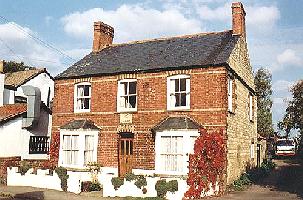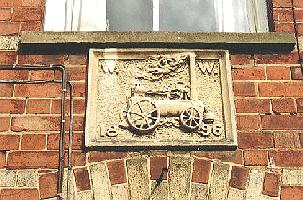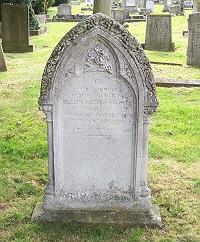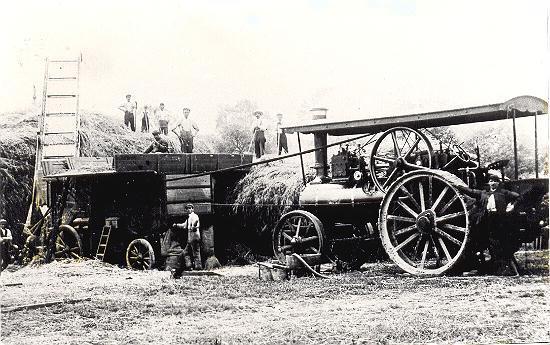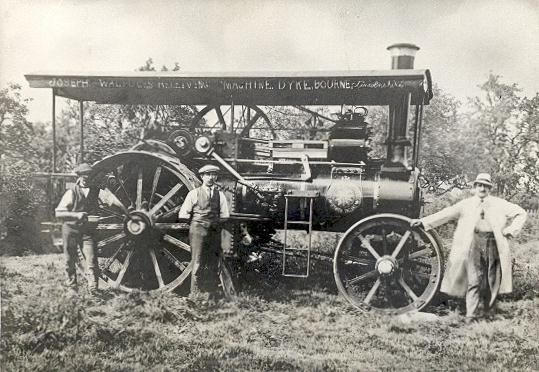|
William Harris Walpole 1843 - 1907
William Harris Walpole was a threshing machinist, better known today as an agricultural contractor, and still remembered for the house which he built in the main street at Dyke village in 1896 with a steam traction engine on the date stone, together with his initials. The threshing business had been started by his father, Joseph Walpole, and when he died in 1895, William, who was born on 10th February 1843, took over and soon owned three engines which were used throughout the Bourne area at harvest time and employing his three sons, George, William junior and Joseph (Joe). William Walpole also took a keen interest in village affairs and was elected one of the first members of Bourne Parish Council when it was formed in 1894, coming second in the poll for the 13 vacant seats, and he was subsequently elected to Bourne Urban District Council when it replaced the parish council in 1899.
On his death, his three sons were given a steam traction engine each and continued in business. In 1910, one of them, William Walpole, was summoned to appear before Bourne magistrates for speeding through Rippingale on his engine which was restricted to 2 m p h. Police Constable Cooke said that on March 8th, he saw the engine towing a threshing machine driving down the Bourne road at a very fast speed, about 5 m p h, although it stopped twice to allow a trap to pass. The constable timed the engine for 410 yards and it completed that distance in three minutes which worked out at 4¾ m p h. The postmaster Stephen Laxton said he saw the engine go past his house and he thought that the speed was about 4½ m p h although Dr A H Holmes, who was in the post office, thought that it went past at "a terrific pace", about 4 to 5 m p h. Walpole told the court that he was on his way to a farm for threshing and estimated his speed at 2 m p h and this was corroborated by Percy Stokes, the flagman. The court found the case proved and Walpole was ordered to pay the costs of £1 10s. 5d. From 1925, William Walpole junior also ran a bus service between Bourne and the villages of Haconby, Morton and Dyke, mainly on Thursdays and Saturdays when markets were held in the town, although there were also limited services on Wednesdays and Sundays. He was an enthusiastic businessman, challenging other operators who applied to the Traffic Commissioners for stage carriage licences to run services that might infringe on his area and in 1932, he was charged with allowing his bus to carry excess passengers, having had 20 seated and 13 standing. The conductor was also fined for not wearing a badge, a requirement of the public transport system at that time. Again, in 1933, another charge of overloading between Bourne and Morton, having 21 adults and 11 children on a 20-seater bus, resulted in a fine. As a result, when he applied for the renewal of his stage carriage licences in February 1934 he was warned that he would be put out of business if matters did not improve and he subsequently sold out to rival companies, notably to Mr Thomas Arthur Smith of Delaine Coaches Limited, forerunner of the firm which operates the Morton route to this day.
REVISED SEPTEMBER 2014 See also Farming in past times
Go to: Main Index Villages Index
|
